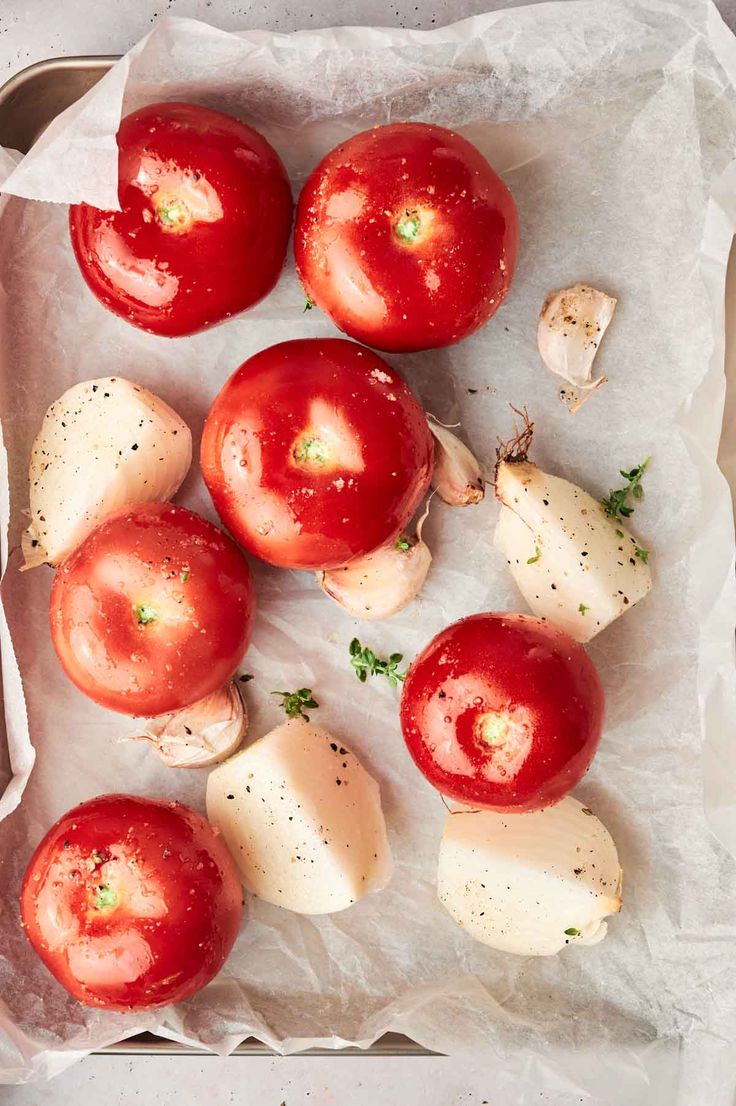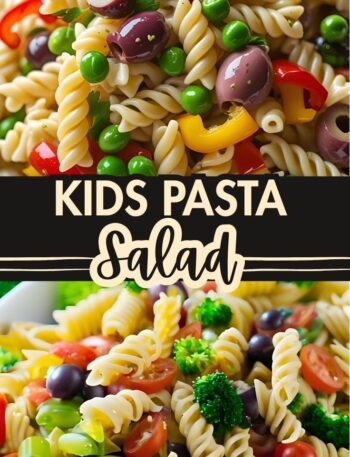
Creamy Tomato Soup is a comforting classic that blends the bright acidity of ripe tomatoes with the rich smoothness of cream, creating a velvety, satisfying dish perfect for any season.
Whether served as a cozy meal on a chilly evening or a light starter in warmer months, this soup offers familiar flavors with a gourmet touch.
Enhanced with garlic, onion, herbs like basil or thyme, and a hint of sweetness, it pairs beautifully with crusty bread or a grilled cheese sandwich. Simple yet indulgent, creamy tomato soup is both nostalgic and nourishing, loved by kids and adults alike.
Creamy Tomato Soup is a classic comfort food that’s rich, velvety, and brimming with deep tomato flavor. Whether served with a grilled cheese sandwich, crusty bread, or on its own, this soup offers a satisfying, cozy experience perfect for lunch, dinner, or a chilly evening meal.
Unlike the canned versions, homemade creamy tomato soup uses fresh or canned tomatoes, real cream, and aromatic herbs to create a soul-warming dish that’s both simple and indulgent.
Creamy Tomato Soup: An Incredible Ultimate Recipe That Will Amaze You
Description
Creamy Tomato Soup is a comforting classic made by blending ripe tomatoes, aromatic garlic, onions, and herbs into a smooth, velvety base.
Simmered with cream or milk, this soup delivers a rich, tangy flavor balanced with subtle sweetness.
It's perfect for chilly days or cozy meals, often served with a warm grilled cheese sandwich or crusty bread.
Easy to prepare with pantry staples, it’s both nourishing and satisfying. Variations can include roasted tomatoes, fresh basil, or a hint of spice for depth.
This timeless soup is a favorite across ages and seasons for its simplicity and soul-warming taste.
Ingredients
Instructions
-
Start by heating the olive oil or butter in a large saucepan or Dutch oven over medium heat. Add the chopped onion and cook for 5–7 minutes, stirring occasionally, until soft and translucent. You don’t want them to brown—just gently sweat to bring out their sweetness. Add the minced garlic and stir for 1 more minute until fragrant. Be careful not to burn it.
-
Next, stir in the tomato paste (if using) and cook it for about 1 minute. This adds umami and depth. Then pour in the canned tomatoes (with juice) or fresh chopped tomatoes. If using canned whole tomatoes, gently crush them with a spoon as they cook.
-
Add the broth and season with a pinch of sugar, salt, pepper, and optional dried basil. Bring the soup to a boil, then reduce the heat and let it simmer uncovered for 20–25 minutes. This reduces excess liquid and concentrates the flavors.
-
Once the soup has simmered and the tomatoes have broken down, remove it from heat. Use an immersion blender to purée the soup directly in the pot, or carefully transfer it in batches to a countertop blender. Blend until completely smooth and creamy. If you prefer a chunkier texture, blend just half or use a potato masher for a rustic feel.
-
Return the smooth soup to low heat. Stir in the cream (start with ½ cup, add more to taste), and simmer for another 2–3 minutes to heat through. Taste and adjust seasoning — add more salt, pepper, or a touch of sugar if needed.
Nutrition Facts
Servings 4
- Amount Per Serving
- Calories 220kcal
- % Daily Value *
- Total Fat 14g22%
- Saturated Fat 7g35%
- Cholesterol 35mg12%
- Sodium 800mg34%
- Total Carbohydrate 20g7%
- Dietary Fiber 4g16%
- Sugars 12g
- Protein 5g10%
* Percent Daily Values are based on a 2,000 calorie diet. Your daily value may be higher or lower depending on your calorie needs.
Note
Creamy tomato soup is one of the most comforting and universally loved dishes, offering rich flavor with minimal ingredients.
Whether you're preparing it for a cozy night in or serving guests a comforting starter, getting the balance of acidity, creaminess, and seasoning right can make all the difference. Here’s how to elevate your creamy tomato soup from simple to sensational.
Tips for the Best Creamy Tomato Soup
- Use Quality Tomatoes:
Whether using fresh tomatoes or canned, quality matters. For canned, San Marzano tomatoes or fire-roasted varieties offer a deep, sweet flavor. If using fresh tomatoes, opt for ripe Roma or vine-ripened tomatoes and roast them beforehand to intensify sweetness. - Sauté Your Aromatics First:
Start with olive oil or butter and gently cook onions and garlic until translucent. This builds the base flavor. Adding a pinch of salt while sautéing helps draw out the sweetness of the onions. - Balance Acidity:
Tomatoes are naturally acidic. To prevent the soup from tasting too sharp, balance it with a small pinch of sugar or a splash of cream. For depth, a little carrot puree or roasted red pepper can also add natural sweetness. - Herbs Make a Difference:
Fresh basil, thyme, or oregano can elevate the flavor. Add dried herbs early in the cooking process to release their oils. Fresh herbs should be added toward the end or as a garnish. - Cream Wisely:
Add heavy cream, coconut milk, or even cashew cream at the end of cooking for a velvety finish. Avoid boiling after adding cream to prevent curdling. For a lighter version, use whole milk or Greek yogurt. - Blend for Texture:
Use an immersion blender for a rustic texture or a high-speed blender for ultra-smooth consistency. Strain through a sieve for the silkiest finish. - Don’t Skip the Seasoning:
Salt is critical. Taste as you go, especially after blending and adding cream. A touch of black pepper, cayenne, or smoked paprika can add warmth and complexity.
Serving Tricks That Elevate Your Soup
- Pair with Grilled Cheese or Croutons:
The classic tomato soup + grilled cheese combo is iconic. You can also make garlic croutons or toast sourdough cubes in olive oil for a crunchy contrast. - Swirl with Garnishes:
Swirl a little cream or pesto on top just before serving. It adds visual appeal and an extra layer of flavor. - Add Protein for a Complete Meal:
Serve with a boiled egg, shredded rotisserie chicken, or white beans for a heartier version. You can even stir in cooked quinoa or lentils. - Serve in Bread Bowls or Mini Cups:
For entertaining, ladle the soup into small cups or shot glasses as an appetizer. For rustic charm, hollowed-out bread bowls make it even more comforting. - Temperature and Timing:
Serve the soup piping hot for the best experience. If making ahead, reheat gently over medium-low heat to avoid separating the cream.
Serving Suggestions:
- Classic pairing: Serve hot with grilled cheese sandwiches or buttered toast.
- Topping ideas: Drizzle with extra cream, add a few basil leaves, or top with garlic croutons.
- Make it fancy: Add a dollop of pesto, goat cheese, or a spoonful of crème fraîche before serving.
Recipe Tips & Notes:
- Fresh vs. canned tomatoes: In summer, ripe fresh tomatoes give a bright, garden-fresh flavor. In winter, canned San Marzano tomatoes are more reliable and deeply flavorful.
- No cream? Use full-fat coconut milk for a vegan version, or substitute with whole milk or Greek yogurt.
- Add-ins: For a heartier soup, stir in cooked white beans, cooked pasta, or shredded chicken at the end.
- Storage: Keeps well in the fridge for 4–5 days. Can be frozen up to 2 months — just reheat gently to avoid splitting the cream.
Variations to Try:
1. Roasted Tomato Soup
Roast fresh tomatoes, garlic, and onions at 400°F (200°C) until caramelized (about 40 minutes), then blend with broth and finish with cream. The roasting adds a sweet, smoky depth of flavor.
2. Spicy Tomato Soup
Add a pinch of red pepper flakes or a chopped jalapeño while sautéing the onion for a spicy kick.
3. Creamy Tomato Basil Soup
Simmer with fresh basil leaves and purée them into the soup for a peppery, herbaceous twist. This variation pairs especially well with a mozzarella-stuffed grilled cheese
Creamy tomato soup is the kind of recipe you can memorize, adapt, and make your own. Whether served on a chilly evening with toasted sourdough or as a starter for a cozy dinner party, it always delivers comfort and flavor in every spoonful.
Conclusion
Creamy tomato soup is a timeless comfort dish that can be rustic or elegant, depending on how it’s prepared and served.
The key lies in layering flavors from the very beginning, using high-quality ingredients, and balancing acidity with creaminess.
With a few thoughtful additions like fresh herbs, a drizzle of cream, or a side of grilled cheese, you can transform a simple pot of tomato soup into a heartwarming and nourishing experience.
Whether you're curled up with a bowl on a rainy day or hosting a casual dinner party, creamy tomato soup always delivers warmth and satisfaction.
By following these tips and serving tricks, you’ll ensure that every spoonful is rich, smooth, and full of flavor — a true bowl of comfort at its finest.
Frequently Asked Questions
What makes tomato soup "creamy"?
Creamy tomato soup differs from traditional tomato soup by the addition of dairy or dairy alternatives.
Common ingredients include heavy cream, half-and-half, or whole milk. For vegan options, coconut milk or cashew cream work well. These enrich the soup’s texture, balancing the acidity of the tomatoes with a smooth, velvety finish.
Can I use canned tomatoes instead of fresh?
Absolutely. Canned tomatoes (especially whole peeled or crushed) are ideal for year-round consistency and bold flavor. Fire-roasted canned tomatoes can add a pleasant smoky note. If using fresh tomatoes, roasting them first enhances their sweetness and depth of flavor.
What ingredients enhance the flavor?
Beyond tomatoes and cream, aromatics like garlic, onion, and fresh basil are essential. A splash of balsamic vinegar or sugar helps balance acidity.
Butter, black pepper, and red pepper flakes can deepen the taste. A pinch of baking soda can also neutralize excess acidity without adding sweetness.
Can it be made ahead or frozen?
Yes! Creamy tomato soup stores well in the fridge for 3–4 days and can be frozen for up to 3 months. For best results, if using dairy cream, freeze before adding it, or stir in cream after reheating to preserve texture. Always cool the soup completely before storing.








